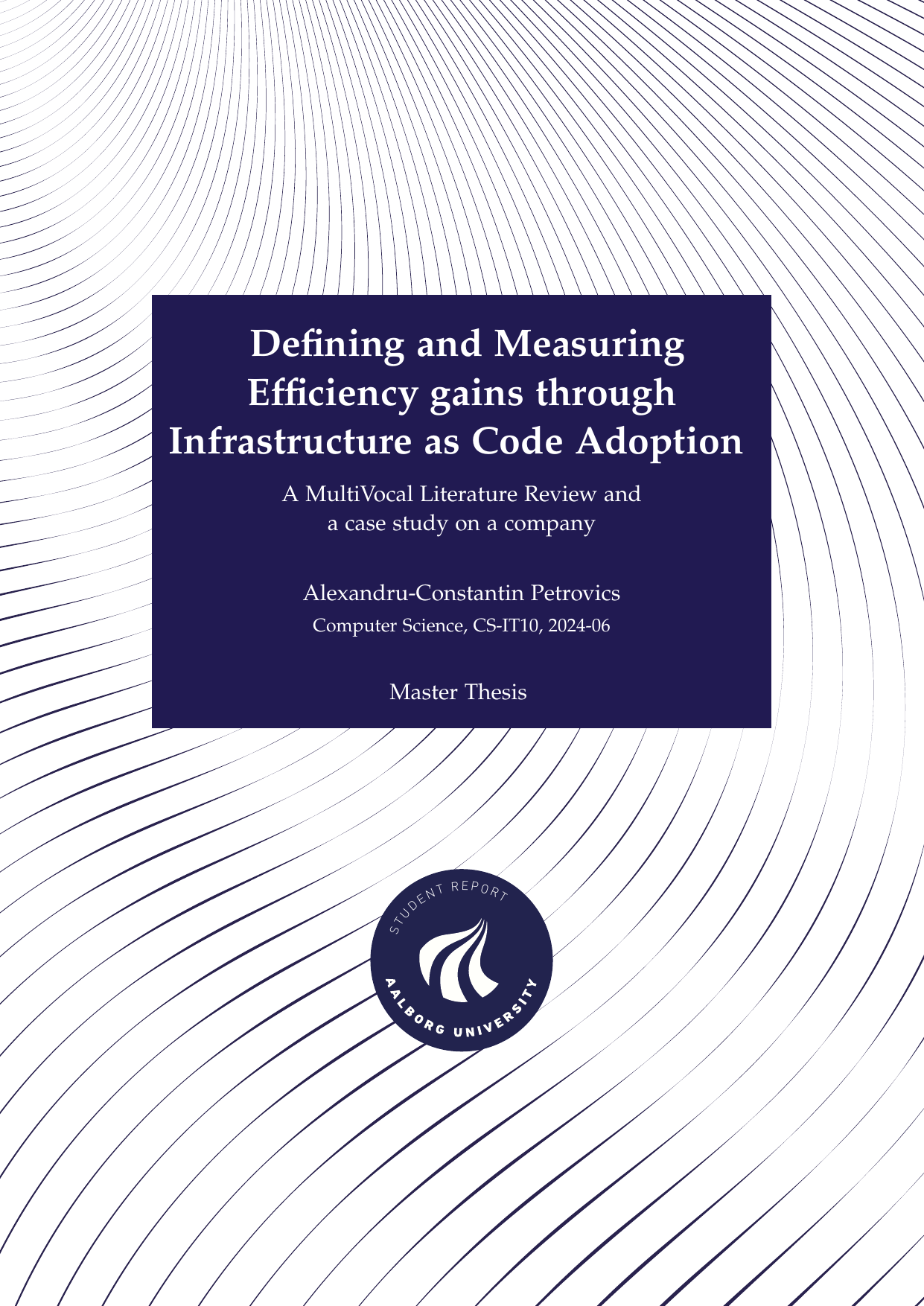
Defining and Measuring Efficiency gains through Infrastructure as Code Adoption: A MultiVocal Literature Review and a case study on a company
Term
4. term
Education
Publication year
2024
Submitted on
2024-06-07
Pages
83
Abstract
The first part, a Multi-Vocal Literature Review (MLR), identified four key outcomes of IaC efficiency: Speed Increase and Cost Reduction, Scalability and Standardization, Security and Documentation, and Disaster Management. Twenty-two key metrics were identified, with the most frequently mentioned being Lead Time for Changes, Time to Restore Service, Change Failure Rate, Deployment Frequency, and Deployment Time Duration. The second part, a case study at Jumia, focused on understanding the company's approach to IaC efficiency. Interviews highlighted critical metrics such as Infrastructure Code Coverage, Time to Restore Service, Number of Drifts, Deployment Frequency, Lead Time for Changes, and Change Failure Rate. These metrics closely aligned with those identified in the MLR, indicating a shared understanding of IaC efficiency between academia and industry. Moreso, the benefits and drawbacks of IaC experienced by Jumia also closely relate to the literature. The findings serve as a reminder that while there is a consensus between academia and practice, IaC efficiency evaluation should be tailored to the specific needs of the organization.
The first part, a Multi-Vocal Literature Review (MLR), identified four key outcomes of IaC efficiency: Speed Increase and Cost Reduction, Scalability and Standardization, Security and Documentation, and Disaster Management. Twenty-two key metrics were identified, with the most frequently mentioned being Lead Time for Changes, Time to Restore Service, Change Failure Rate, Deployment Frequency, and Deployment Time Duration. The second part, a case study at Jumia, focused on understanding the company's approach to IaC efficiency. Interviews highlighted critical metrics such as Infrastructure Code Coverage, Time to Restore Service, Number of Drifts, Deployment Frequency, Lead Time for Changes, and Change Failure Rate. These metrics closely aligned with those identified in the MLR, indicating a shared understanding of IaC efficiency between academia and industry. Moreso, the benefits and drawbacks of IaC experienced by Jumia also closely relate to the literature. The findings serve as a reminder that while there is a consensus between academia and practice, IaC efficiency evaluation should be tailored to the specific needs of the organization.
Documents
